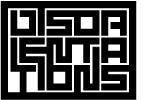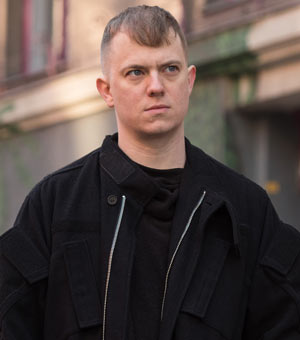Attila Richard Lukacs at Johnen Galerie, Berlin
by Travis Jeppesen on June 1, 2011
The resurgent emergence of the Polaroid photograph as a proper medium in and of itself throughout the last decade can, I believe, be attributed to a social anxiety surrounding the increasing digitalization of practically every vital sphere. The Polaroid inevitably calls to mind an earlier version of accessibility that seems quaint by today’s standards, and thus imbibes the viewer with a sense of nostalgia. There is also a deliberate artlessness native to the technology, a built-in problematic that gives the artist one chance and one chance only to get it right – and even when she does, it is doubtful that the results are going to look all that great. You really have to be both conscious of and content with the qualitative reality of the roughness that comes with the package.
Canadian artist Attila Richard Lukacs first made his name in the late 80s and early 90s with figurative paintings depicting skinheads and thugs in erotically charged portraits and scenes, utilizing classical chiaroscuro contrasts to imbue the images with a sense of timelessness. Occasionally the paintings halted just a few short feet away from kitsch’s front doorstep, and this was accomplished thanks to the not-so-subtle darkness of the content—racist skinheads shaving one another’s heads or wrestling. Some of the paintings were clearly made with the help of models—Caravaggio always comes to mind here, not just because of the chiaroscuro but because the backgrounds are often obscure, when not totally abstract—while in others, Lukacs gleefully allowed his imagination to take a detour beyond the perceptive limits of the real. His is always a seductive escapism, where equal attention has been paid to both the flesh of his subjects and the racy iconography they either flirt with or openly embrace.
There is a sense of loss and ambiguity that perennially haunts Lukacs’s early work, from whence it derives its power. And the city of Berlin—or, to be exact, West Berlin—played a formative role in these paintings, for most of them were created during the ten-year period he resided here, 1986 to 1996. It was a pivotal time of transition for the Cold War-scarred city, and Lukacs was on set in the middle of the action, churning out these beautiful images of Berlin’s disenfranchised young male denizens adrift in a concrete sea of uncertainty.
The current exhibition at Johnen Galerie features not the paintings, but the series of Polaroid photographs Lukacs took that inspired them. Lukacs appears to have taken several dozen Polaroids of each of his models, and they have been compiled on to boards and erected on the gallery walls, providing an interesting study of the period figure, as well as a bevy of clues for devoted fans of the artist. The question of how they rank in importance to the rest of Lukacs’s work, however, remains open. While they were undoubtedly an important part of Lukacs’s process (I use the past tense here because it seems that Lukacs has moved on to abstraction in more recent years), I found myself asking whether it was too much that that process was being revealed in front of me. In addition to hardcore Lukacs fans, the Polaroids might also pique the interest of those interested in Berlin’s recent history and devotees of gay male erotic photography. But otherwise, the aesthetic value of the Polaroids as works of art seems like it is, at best, beginning to fade in rhythm to the decay of the flimsy film on which they are imprinted. If anything, Lukacs’s exhibition points to the limitations of this particular revivalist trend, signaling analog’s sad defeat and indicating that the time has come to say goodbye.

